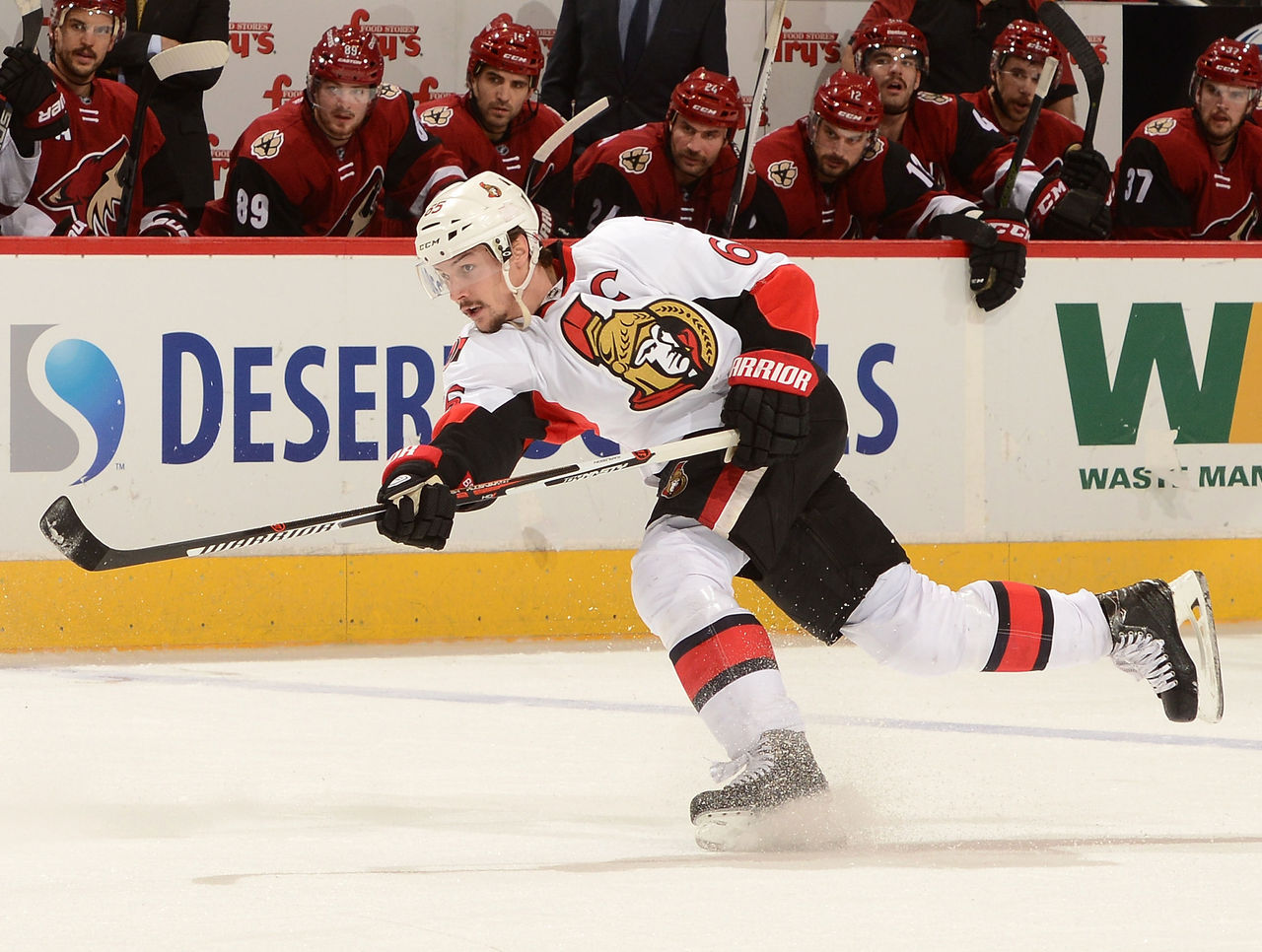Why building from the net out is a legitimate drafting strategy
Follow theScore's fantasy feed on Twitter (@theScoreFantasy) for the latest news, features and more.
Any time your favorite NHL team enters a rebuilding mode or hires a new general manager, you may have heard the phrase "we are going to build this team from the net out." It's pretty self-explanatory: goaltenders and defense will be prioritized over forwards.
It may be hard to believe, but this strategy can actually work in both standard and banger fantasy leagues. Here's why it works and how it can be executed to perfection:
Goaltender is the most valuable position
The point scoring system for a typical fantasy hockey league goes as follows:
| Skaters | Goaltenders |
|---|---|
| Goals | Wins |
| Assists | GAA |
| Plus/Minus | SV% |
| Penalty minutes | Shutouts |
| Shots on goal | |
| Power-play points |
There are different variations of many leagues. Some leagues will include hits and blocked shots for skaters, while others will add saves and losses for goalies. Nonetheless, goaltender stats usually account for roughly 40 percent of the categories in head-to-head leagues (the best way to play fantasy hockey).
A standard fantasy hockey league will have 16 open roster spots. The starting roster will consist of two centers, two left wingers, two right wingers, four defensemen and two goalies. The remaining bench spots can be used however the owner chooses. Usually three goalies are drafted and carried throughout the season.
Assuming owners carry three goalies, this would mean that each goalie accounts for 13 percent of your weekly results, compared to a skater accounting for just 4.6 percent.
Based on this simple math, you'd think goalies would be placed on a higher pedestal and would be drafted earlier than they typically are in fantasy hockey.
The mathematics of the position are one thing, but then you need to factor in that the amount of timeshares teams employ. Last season, only 10 goalies started 60 or more games, while 19 started 50 games or more. Having at least two goalies on your roster who are projected to start 60 or more games is crucial.
Getting two stud netminders within the first three or four rounds is ideal. Your third goaltender can be taken in the mid-late rounds. Don't feel like you're reaching by selecting Carey Price or Braden Holtby at the end of the first round. They have a much greater impact on a week-to-week basis than someone like John Tavares or Claude Giroux would, for example.
Having two or three elite goaltenders can also make for outstanding trade leverage later in the season.

Elite defensemen are a dime a dozen
No matter what sort of format your league is, Senators defenseman Erik Karlsson should be chosen within the first five picks. Drafting him outside of the top 5 is a huge steal.
Think of it this way: Karlsson had 82 points last season, and you can pretty much pencil him in for at least 70 each year at this point in his career. A forward you would take at this spot over Karlsson, such as Tyler Seguin, will likely amass 80-90 points if they play a full season. Roughly 10 points or so is not worth it when you consider positional scarcity.
The point-scoring gap between forwards and defensemen becomes much larger as the draft proceeds. The chart below illustrates how many points each forward and defenseman tallied at their respective positional rank in terms of points from last season.
| Rank | Defenseman | Forwards | Difference |
|---|---|---|---|
| 10 | 51 | 74 | 23 |
| 20 | 44 | 65 | 21 |
| 30 | 37 | 62 | 25 |
| 40 | 34 | 60 | 26 |
| 50 | 30 | 58 | 28 |
| 60 | 26 | 54 | 28 |
| 70 | 23 | 52 | 29 |
| 80 | 21 | 51 | 30 |
As you can see, other than the slight blip at the 20th ranked forward and defenseman, the point total difference increases as you get deeper into the player pool. If you're able to draft two or three elite defensemen such as Karlsson, Roman Josi and Oliver Ekman-Larsson, you can stockpile forwards in the 55-65 point range in the later rounds of your draft.

Don't completely ignore the forward position
Just because you plan on building from the net out, doesn't mean you should completely ignore the forward position until you have drafted four or five defensemen and three goalies.
Within the first six rounds of the draft, it is ideal to use at least two picks on goaltenders and two on defensemen. Two can also be used on forwards, but it is okay to wait if elite defensman or goaltenders fall your way.
Based on theScore's Esten McLaren's standard league player rankings, you could hypothetically wind up with a core like this in 10-team leagues if you chose fifth overall (ADP data isn't available before preseason):
| Round (pick) | Player | POS | McLaren's Rank |
|---|---|---|---|
| 1 (5) | Erik Karlsson | D | 4 |
| 2 (16) | Carey Price | G | 17 |
| 3 (25) | Steven Stamkos | C/RW | 25 |
| 4 (36) | John Klingberg | D | 40 |
| 5 (45) | Cory Schneider | G | 48 |
| 6 (56) | Drew Doughty | D | 56 |
| 7 (65) | Jeff Carter | C/RW | 68 |
| 8 (76) | Martin Jones | G | 76 |
| 9 (85) | Alex Galchenyuk | C/LW | 86 |
| 10 (96) | T.J. Oshie | C/RW | 94 |
As the draft proceeds, other owners will be frantically searching for adequate defensemen and goaltenders while you can continue to stockpile solid forwards and build a balanced team.
As long as your do your research, come to the draft prepared and know the ADPs of each player, this is the best way to build a championship caliber fantasy hockey team.